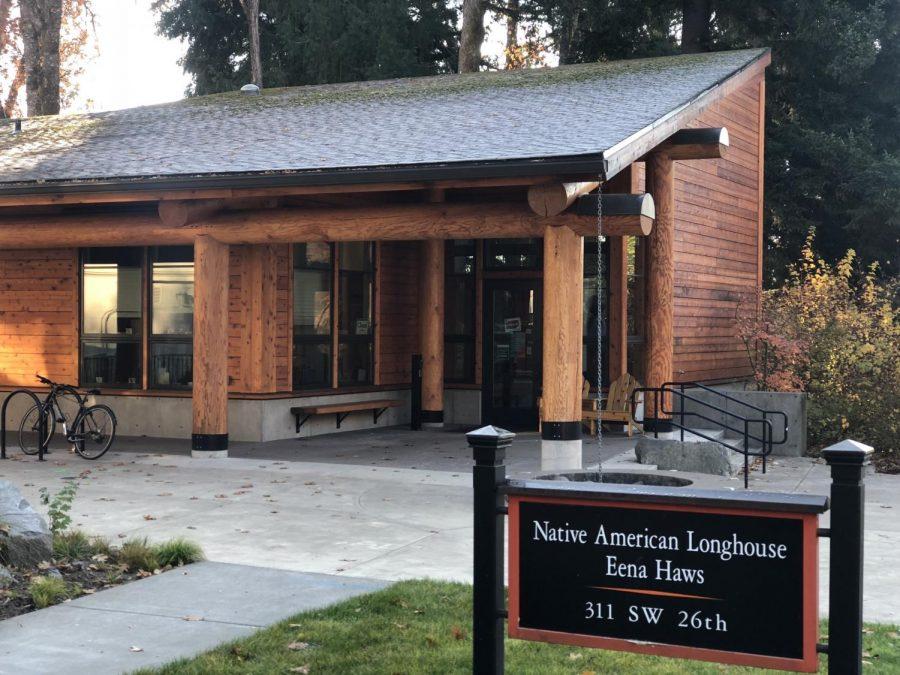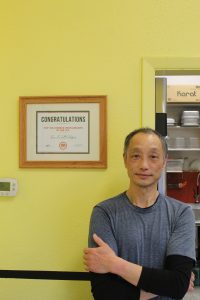History of Thanksgiving
November 19, 2018
Excitement builds in the air as students start to pack their bags for the trip home. With everyone talking about what food they’re going to eat or which family member they are going to try and avoid, it is easy to forget that most everything you learned about the history of Thanksgiving is wrong.
We can blame textbooks that are often softened or completely rendered out of context, children’s TV shows that only want to tell pleasant stories or the American government, who loves to whitewash its past and only represent the European colonialist point of view. According to Wikipedia, whitewashing is a metaphor meaning “to gloss over or cover up vices, crimes or scandals or to exonerate by means of a perfunctory investigation or through biased presentation of data,” basically meaning to re-write events in order to show oneself in a more favorable light. America’s treatment of its past is reminiscent of George Orwell’s “Nineteen Eighty-Four,” where the protagonist of the novel’s job is to provide false information for historical records to ensure that they always maintain the party line.
Most of the history that gets discussed when it comes to Thanksgiving comes from the Puritans who are English Reformed Protestants in the 16th and 17th centuries who sought to “purify” the Church of England from its “Catholic” practices, but they only represent one small group of the peoples and cultures that shaped New England. It is equally important that we understand the various Native peoples who lived in the area and their traditions.
According to “The Common Place, The Journal of Early American Life,” politics have been at the forefront in celebration of holidays such as Thanksgiving. “From the very beginning. Columbus’s arrival and the first Thanksgiving were all non-events in their own day. Both stories were rediscovered-rather, re-invented-in the late 18th century.”
Plymouth’s annual Thanksgiving feast begun in the late 17th century, rather than the early 17th century as we’re told in school. Even then, it was a local affair all the way until 1777. It wasn’t until 1863 (almost two-hundred years later) that President Lincoln first proclaimed Thanksgiving to be a national holiday. A holiday he dedicated to “‘the whole American people,’ so that they might give thanks ‘with one heart and one voice.’”
James W. Loewen, a sociologist and author of Lies My Teacher Told Me: Everything Your American History Textbook Got Wrong, says that “High school textbooks are particularly bad about stating absolutes because these materials ‘teach history’ by giving students facts to memorize even when the details may be unclear.” While you can’t depend on what you learned in high school, there are things you can do to educate yourself about this national holiday.
According to Charlie PeBenito, Communication Representative of the Native American Longhouse (NAL) Eena Haws at Oregon State University, there is a lot of the rhetoric surrounding Thanksgiving that wants to emphasize America as this grand melting pot.
“Whereas if you actually delve into what we know about Thanksgiving in that historical context, it was between ‘the pilgrims and who?’ A professor of ours shared that. He’s been teaching for ten years and no one can ever correctly name the original aboriginal people who participated in the [first] thanksgiving,” PeBenito said. “That’s where the confusion stems, we know the dominant culture that participated in this, but we don’t ever mention the indigenous side of it, and that’s something in media that is kinda portrayed as this broad group that is all the same, and it isn’t. That goes in with the whole ‘discovery’ of America, where it was and who did they come in contact with because Columbus didn’t set foot on what we now consider the U.S.”
The media likes to put all Native peoples in a box when they portray them. As if they could be summed up in one general sphere of dark skin, long hair and loincloths. PeBenito and others want, “more specificity at times, where you can see it is this group of people and you can look it up and see they have a certain way of doing things. Their art is different, the way they cook food is different, the recipes they use. The Americas is a good chunk of the world and so there is a lot of different indigenous plants that change from every region, so when it gets to more specificity, things get better. When you can hone in on different recipes that they used so that you aren’t getting this blanket statement that all natives cooked food over a fire.”
So what can you do? Natives now make up less than one percent of the American population. In a world where it feels like nothing is getting done, what can we do to change our sphere of influence as we celebrate a holiday that began the erasure of Native people? One thing you can do is educate yourself on the untold history of the United States. Call out appropriation when you see it, teach others what you find, don’t be afraid to talk about it and when you do the research, make sure to use accurate sources that support Native authors.
The month of November is also National Native American Heritage Month. The Native American Student Association and NAL Eena Haws are presenting “Native Feast.” It is a celebration of Native American Heritage Month and will open a discussion of what Thanksgiving means along with various other topics. It will highlight foods indigenous to the Americas, celebrate community and Native culture.
The “Native Feast” is November 19 2018 from 5:00 to 7:00 p.m. at the Native American Longhouse Eena Haws. Tickets are free and available at the Longhouse prior to the event.






